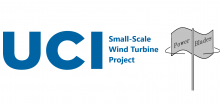Small Scale Wind Turbine
Background:
The history of wind power is as early as 5,000 BC in Egypt. By 200 BC, simple wind-powered water pumps were used in China, and windmills with woven-reed blades were grinding grain in Persia and the Middle East.
Nowadays, the main power source in human society is electricity. Although people can gain enough electricity by burning fossil fuel, it creates excess pollutants. As a result, a clean, efficient way to generate electricity must come out, and wind turbines are the right way to solve the problem.
A wind turbine is a device that converts the wind's kinetic energy into electrical energy.The wind rotates the turbine blades, and as a result, the generators spin and generate electricity. The electricity will be stored in batteries or sent to the place where it needs power. By generating electricity with wind turbines, no pollutants or greenhouse gases will be released into the atmosphere.
Objective and Goals:
The overall goal of this project is to design an affordable, portable wind turbine. The ideal usage of this wind turbine is meant for camping purposes. The device must be small and light enough for someone to carry it in their bag. The turbine must be easy to assemble for the user. The turbine’s purpose is to charge about two or three devices overnight. We will not be manufacturing a physical version of this turbine, but we will have an overall design that is ready to be manufactured.
Goals
look at the market of competitive wind turbines to know the average cost. (Week 2)
Research on the functionality and components of a wind turbine. (Week 2)
Research variations of wind turbines. (week 3)
Create 3 general design concepts and pick the best one.(week 4)
Have a bill of materials and the cost of each material. (week 4)
Create a detailed wind turbine design. (week 5)
Know the overall cost.
The dimension and weight of the turbine.
Have a CAD model of the turbine.
Technical Details - How design was chosen:
On the market, there are two main sections of the design of wind turbines - horizontal axis wind turbines (HAWT) and vertical axis wind turbines (VAWT). HAWT is the type where the axis of rotation of the turbine is horizontal to the ground, and VAWT is the type where the axis of the rotation of the turbine is vertical to the ground.
After researching the design concept, we came up with three potential design choices, which are savonius, shrouded, and H-Darrieus wind turbine. Savonius and H-Darrieus wind turbines are VAWT, while shrouded wind turbines are Horizontal. From the perspective of engineering, the Savonius wind turbine has the strength of simplistic design and low manufacturing costs, but it is poor for power efficiency. The shrouded wind turbine has the strength of higher power efficiency and being open to low wind speed location, but the efficiency is limited to the wind direction. H-Darrieus has the strength of simple design as well, but it has the lower power output. From the perspective of the market, VAWTs are more likely to have increasing market share where the total market is expected to remain the same size in the next few years.
We computed a detailed analysis and created a table to weigh the strengths, weaknesses, threats and opportunities of each type of wind turbine, and concluded the Savonius wind turbines would be the best.
Team Contact:
Casey Guan - cyguan@uci.edu
Sponsor/Advisor:
Mahmoud Abdelgalil - maabdelg@uci.edu

